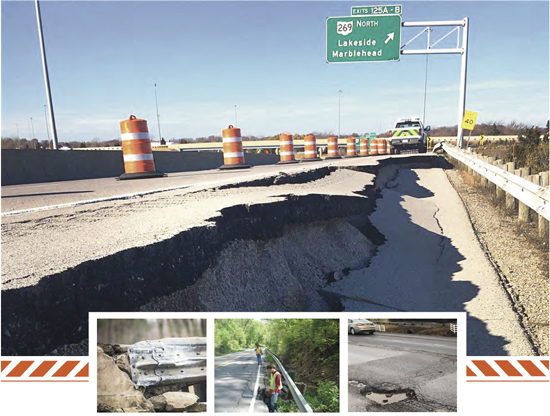Ohioans should prepare for gas tax hike
DAVE MOSIER/independent editor
With the Ohio Department of Transportation set to run out of money for new projects by July 1, Ohioans will likely see their first gasoline tax increase in 14 years.
“Beginning July 1, there is no revenue available for any new highway improvement projects of any kind in any place in our system,” said ODOT Director Jack Marchbanks recently.

According to a recently-released report from ODOT’s Advisory Committee on Transportation Infrastructure, two factors have played into ODOT’s decreasing infrastructure revenues.
First, the $1.5 billion raised for highway projects through the sale or bonds backed by future toll revenue from the Ohio Turnpike, which paid for 13 major highway projects and also allowed the Ohio Turnpike and Infrastructure Commission to make improvements along the turnpike corridor, won’t provide additional funds until the commission pays off the bond debt in 2048.
In addition, Ohio’s gasoline tax, currently at 28 cents a gallon, hasn’t been raised since 2005, after increasing 2 cents a year from 2003 until 2005. Since then, construction and other costs have risen dramatically, so that the value of a construction dollar in 2003 is now only 58 cents today.
The 28-cent motor fuel user fee ranks Ohio 29th among all U.S. states. Meanwhile, every state surrounding Ohio has increased motor fuel user fees since 2014, and all but one of Ohio’s neighbors (Kentucky) have significantly higher fees.
Unlike Indiana and Michigan, which have indexed their gasoline taxes to inflation increases, Ohio’s flat gasoline tax has declined in value because of inflation.
Meanwhile, maintaining Ohio’s transportation infrastructure, the eighth-largest in the U.S. and valued at $115 billion, is critical to the economic vitality of the state. The main problem is that motor fuel tax money Ohio receives hasn’t kept pace with highway maintenance and construction needs.
Moreover, while Ohio motorists are driving more miles than in 2003, it hasn’t led to an increase in fuel tax revenues because vehicles today are more fuel-efficient than they were a decade ago. That means, essentially, that tax revenues have remained flat while wear and tear on the transportation system has increased, leading to the need for more money to main Ohio’s highway infrastructure.
State government has tried to offset the need for more infrastructure dollars by borrowing against future motor fuel tax revenues, but the problem is that, with the state now paying $350 million in debt service costs, money that could be used for highway maintenance and construction is paying off debt from past projects.
Adding to the infrastructure situation in Ohio, Marchbanks noted, is that local governments, which did not benefit from ODOT and Turnpike Commission borrowing over the past 15 years, have had to make road maintenance cuts.
“I am not exaggerating when I tell you that additional delayed maintenance of these already poor roads and bridges could quickly create a situation from which county and municipal governments may never financially recover,” the ODOT director said.
On February 6, after hearing from a number of people on the state’s highway and the public, the Advisory Committee on Transportation Infrastructure recommended an increase in the motor fuel user fee to maintain and improve the state’s transportation system.
Governor Mike DeWine will consider the recommendations as he compiles his first biennial budget.
POSTED: 02/20/19 at 8:52 am. FILED UNDER: News







